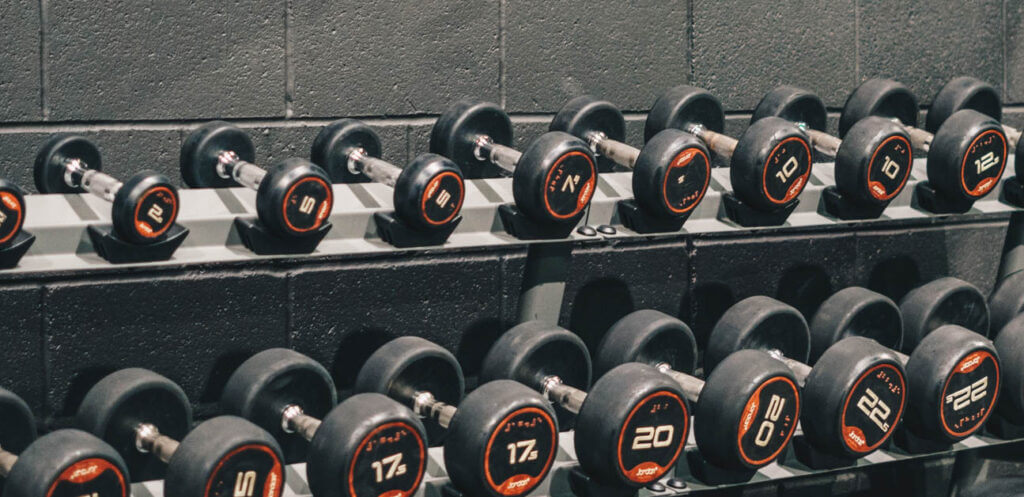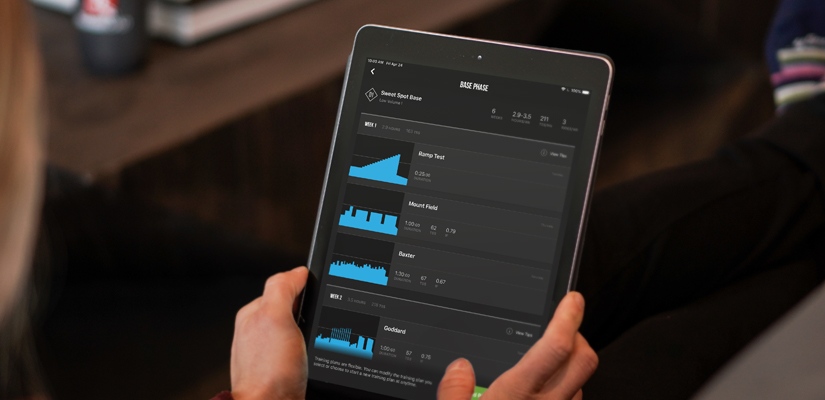Muscles Used for Cycling and How to Train Them
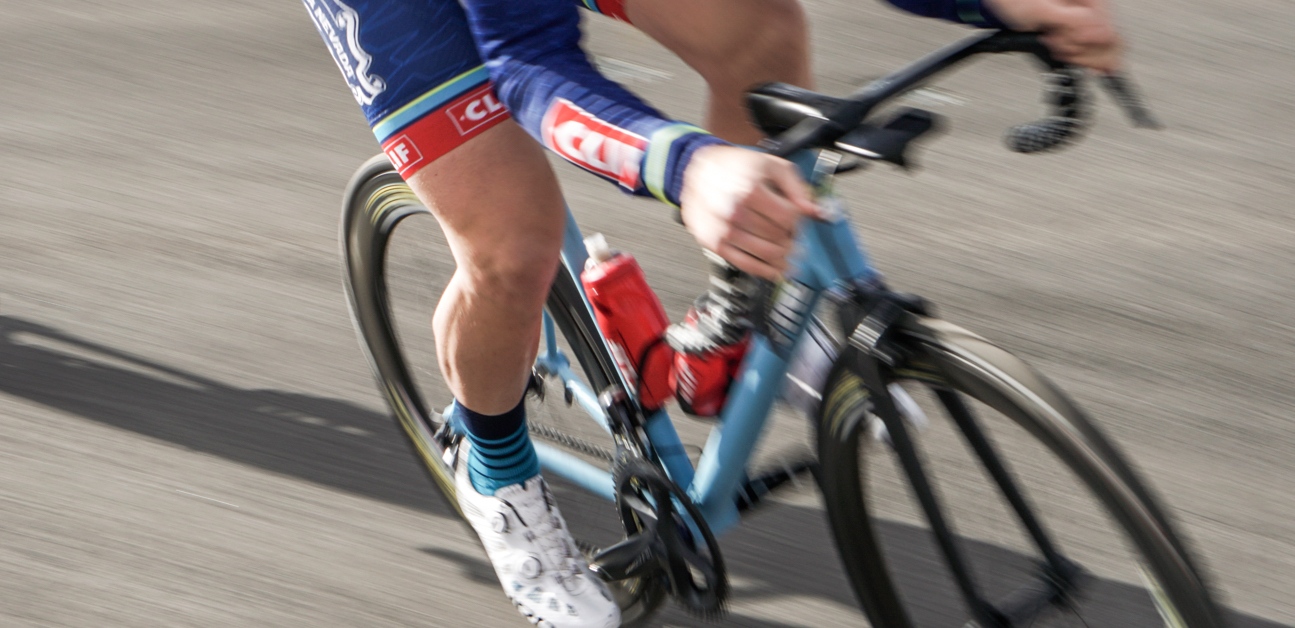
The primary power-producing muscles used for cycling include the quadriceps, hamstrings, and glutes. The calf muscles, abdominals, and erector spinae, in conjunction with upper body muscles, are used for stability when riding your bike.
Cycling is usually thought of as cardiovascular activity, and rightly so. But bike riding also works the skeletal muscles. The production of power that drives the pedals involves a complex activation of several muscle groups. Of course, the muscles most used in cycling are the ones in the lower body—mostly the quads and glutes. However, you use muscle groups throughout the core and upper body for balance and stability. Depending on your cycling discipline and bike fit the activation level of these groups will vary.
Table of Contents
- Cycling Muscle Groups
- The Pedal Stroke
- Core Muscles Used In cycling
- Upper Body Muscles Used In Cycling
- Will Cycling Tone Your Muscles?
Muscles Used In Cycling
Riding a bike requires you to use your muscles for two different purposes—power production and balance. It requires quite a bit of muscle activation within complex, coordinated patterns. Of course, it all begins with the pedal stroke involving the quads and glutes as the main source of power. But you need a stable platform to efficiently deliver that force when you’re on the bike. That’s where your core and upper body muscles come into play as you balance over the three contact points on the bike.
Leg Muscles
- Quads – the primary power producers
- Hamstrings – aids with knee stability
- Glutes – produces power and stability
- Calves – aids with ankle stability
Core Muscles
- Abdominals – used to stabilize the upper body
- Erector spinae – back muscles that stabilize the upper body
Upper Body Muscles
- Triceps – supports upper body weight
- Latissimus dorsi – used for pushing and pulling the handlebars
- Pectorals – supports upper body weight
Muscle Fiber Types Used
During a ride, you are continually activating muscle groups throughout the body to drive the pedals and keep yourself upright. The leg muscles produce pedaling power, and a variety of muscle groups throughout the body generate stability. But how does cycling work these muscles?
The fibers that make up our muscles can be divided into three types. Slow twitch (Type 1), Fast Twitch (Type 2A), and Fast Twitch (2B). In the simplest of terms, the primary difference between each type is how they are used. Type 1 fibers are used for low force but have exceptional endurance. On the other hand, Type 2 fibers can generate more force, but fatigue quickly.
So, when you use your muscles for cycling, you’re mostly using and training Type 1 muscle fibers. This is because cycling is primarily an endurance activity. There are times when you use Type 2 fibers, like sprinting and climbing in a large gear. But the vast majority of the time it’s all about endurance. To learn more check out, How Strength Training can Improve Endurance For Cyclists.
Muscles Used In The Pedal Stroke
The pedal stroke is a seemingly simple motion. Yet it involves several muscle groups that work in concert to provide power to the pedals. Overwhelming the muscles that are used in cycling are the quads. However, the glutes and hamstrings play a vital role as well.
Quads
The quads and glutes are the powerhouses of the pedal stroke. The quadriceps are a group of four thigh muscles, of which the vastus intermedius, vastus lateralis, and vastus medialis are the primary power producers. These muscles fire in concert from just before the top of the pedal stroke all the way to the bottom.
Glutes
The glutes contribute as well. The gluteus maximus provides additional power while the gluteus medius and minimus stabilize the hips, regulating the thigh’s outward rotation. Glute activation is highly dependent on your bike fit. In general, rotating the pelvis towards the handlebars leads to greater activation. But even with a perfect bike position, your body has to activate the right motor pathways.
Adaptive Training
Get the right workout, every time with training that adapts to you.
Check Out TrainerRoadLazy glutes or inactive glutes can be problematic for many cyclists. Caused by limited activation in life off the bike, inactive glutes can lead to knee problems. If the glutes aren’t utilized, over time, the brain compensates by assigning the stability tasks that are usually handled by your glutes to your quads and hamstrings during the pedal stroke. This means that the quads are both pushing the pedals and stabilizing the knee.
Hamstrings
The hamstrings are most active from the six o’clock to nine o’clock position of the pedal stroke. The biceps femoris is the key muscle in this activation. While the quads generate the bulk of the power, some of the load is carried by the hamstrings. Moreover, this aids knee stability when the leg is fully extended. Emphasizing the hamstrings is akin to scraping something off the bottom of your shoe. This technique will slightly increase power, reduce the load on the quads, and help smooth power delivery.
How to Train Your Quads, Glutes, and Hamstrings
Training the power-producing muscles has two goals—endurance and strength. Muscular endurance is the ability to contract a muscle repeatedly. This is what helps you push a reasonably high power for long durations and fight fatigue. Training muscle strength involves increasing both how the muscle fibers are contracting as well as how many.
Training muscular endurance is relatively straightforward. You need to ride your bike and use your muscles. How much you ride depends on intensity. Muscular endurance is best addressed during the base training season. There are two ways to go about base training. The first is a traditional approach which riding at a low intensity for long durations. The second, and more time-efficient way, is Sweet Spot Base.
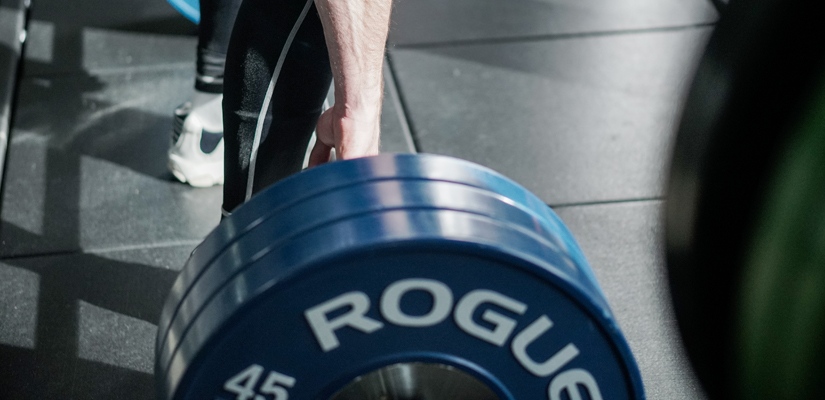
Cyclists are rarely confused with bodybuilders. However, strength training is crucial for performance on the bike and general health. This training will help increase muscle capacity and the number of fibers recruited, resulting in greater power. The best lifts for the quads, glutes, and hamstrings are squats and deadlifts.
Core Muscles
Core muscles are critical for providing a stable platform for power production and comfort. The abdominals and erector spinae work together to steady the upper body when you are pedaling. This helps you efficiently use the power you are producing. Adequate core strength is vital for fending off lower back pain during a long day in the saddle.
How to Train Your Core Muscles
Unfortunately, cycling doesn’t work the abs or lower back productively. This is because the pedals, saddle, and handlebars do most of the work supporting your weight. So while you won’t develop six-pack abs from riding, there are several exercises you can do to improve trunk strength.
A simple plank is an excellent way to begin improving your core. If you are just starting, begin with a 30-second plank, and repeat 3-5 times. As you progress, increase the time upward to 2 minutes. There are plenty of plank variations, but a good one to include is the side plank. For more core exercises, check out 5 Core Exercises for Cyclists to Improve Efficiency and Strength.
Upper Body Muscles
The arm, shoulder, upper back, and chest muscles are all used to varying degrees while you are riding. The level of activation of these muscles depends on the circumstance and discipline. For instance, riding technical singletrack will work the upper body more than a section of smooth tarmac.
The triceps, pectorals, and shoulder girdle help bear the weight of your upper body. The rougher the ride, the more the muscles are used. In particular, weak triceps can be problematic and often manifest in a rigid, locked elbow position. Because the arms act as a shock absorber, locked elbows can lead to neck and shoulder pain. Shoulder girdle strength is vital for time-trialists and triathletes riding in the aero position.
The Latissimus dorsi is the largest muscle in the upper body and is used for various tasks. The lats expand and compress the rib cage when breathing. Additionally, they are used to pull on the handlebars. This is especially true when sprinting.
How to Train Your Upper Body Muscles
There are plenty of ways to train the upper body. Simple bodyweight exercises like pushups and pullups do a good job of targeting the upper body’s muscles. You can go a step further and try the spiderman pushup to add in some core work. If you have some dumbbells, renegade rows can strengthen both the lats and core. As long as you have access to free weights, the bench press, barbell rows, and military press are productive lifts that strengthen the upper body.
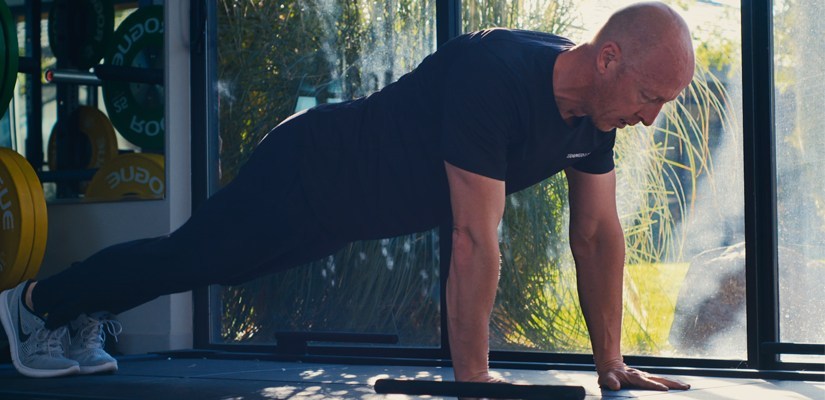
Muscles Used By Road Cyclists
Cycling discipline influences which muscle groups are emphasized during a bike ride. For riding on the road or smooth gravel the legs are the most engaged. Riding on smooth surfaces requires less stability in general. As a result, your upper body and core muscles aren’t forced into action. However, they still require attention. Have you ever been on a longer ride and experienced lower back pain? Many times this is due to poor posture caused by weak core muscles.
Muscles Used By Mountain Bikers
Generally, mountain bikers engage their muscles more because riding technical trails requires more stability and balance. Of course, the leg muscles are the primary power producers for pedaling, but the upper body and core muscles are much more engaged. In contrast to road cycling, the stability movements in mountain biking are rapid and repeated—meaning Type 2 muscles fibers throughout the body play an important role.
Muscles Used In Cycling Chart
| Muscle | Sprinting | Technical Trail | Standing | Seated Climbing | Cornering |
| Quads | High | High | High | High | Med |
| Hamstrings | Medium | Med | Low | Med | Low |
| Glutes | High | High | High | High | Low |
| Abs | High | High | Med | Medium | High |
| Erector Spinae | High | High | Medium | Medium | High |
| Triceps | High | High | High | Medium | High |
| Lats | High | Medium | Medium | Low | High |
| Pectorals | Medium | High | High | Low | Medium |
Will Cycling Tone Your Muscles?
Toned muscles result from either increased muscle mass or lower overall body fat, but usually both. Cycling, for all its health benefits, won’t help much with increasing muscle mass, but it can help improve your body composition. So the short answer is no, cycling alone won’t tone your muscles.
Cycling doesn’t increase strength or muscle mass because you are overwhelmingly using your muscles aerobically, through very low force repetitions—which is great for burning calories. The recipe for increasing muscle mass and strength is through resistance training. But that being said, you can still train all the muscles used in cycling for health and performance gains.
How Strong Should A Cyclist Be?
To be a faster cyclist, you need to be a strong cyclist. But how strong do you need to be? Depending on your discipline and the type of rider you want to be, we’ve created strength training benchmarks for cyclists. These benchmarks are aimed solely at endurance athletes to increase performance, improve quality of movement, and decrease the risk of injury. If you want to enhance the muscles used in cycling, strength training is a good choice.
Cycling is an endurance sport that uses muscles throughout the body. Riding your bike works the legs muscles, but you probably won’t see increased muscle mass. Instead, you’ll increase muscular endurance. Incorporating year-round strength training will improve your comfort and performance. To learn more about strength training, check out Strength Training Basics for Cyclists.
More on Strength and Mobility Training:
For more cycling training knowledge, listen to Ask a Cycling Coach — the only podcast dedicated to making you a faster cyclist. New episodes are released weekly.
References and Further Reading
- Arkesteijn M, Jobson S, Hopker J, Passfield L. The Effect of Cycling Intensity on Cycling Economy During Seated and Standing Cycling. Int J Sports Physiol Perform. 2016;11(7):907-912. doi:10.1123/ijspp.2015-0441
- da Silva, J. C., Tarassova, O., Ekblom, M. M., Andersson, E., Rönquist, G., & Arndt, A. (2016). Quadriceps and hamstring muscle activity during cycling as measured with intramuscular electromyography. European journal of applied physiology, 116(9), 1807–1817. https://doi.org/10.1007/s00421-016-3428-5
- de Groot G, Welbergen E, Clijsen L, Clarijs J, Cabri J, Antonis J. Power, muscular work, and external forces in cycling. Ergonomics. 1994;37(1):31-42. doi:10.1080/00140139408963620
- Hansen EA. On voluntary rhythmic leg movement behaviour and control during pedalling. Acta Physiol (Oxf). 2015;214 Suppl 702:1-18. doi:10.1111/apha.12529
- Saito A, Watanabe K, Akima H. Coordination among thigh muscles including the vastus intermedius and adductor magnus at different cycling intensities. Hum Mov Sci. 2015;40:14-23. doi:10.1016/j.humov.2014.11.010
- Snarr, R. L., Esco, M. Electromyographical Comparison of Plank Variations Performed With and Without Instability Devices, Journal of Strength and Conditioning Research: November 2014 – Volume 28 – Issue 11 – p 3298-3305 doi: 10.1519/JSC.0000000000000521
- Suzuki S, Watanabe S, Homma S. EMG activity and kinematics of human cycling movements at different constant velocities. Brain Res. 1982;240(2):245-258. doi:10.1016/0006-8993(82)90220-7
